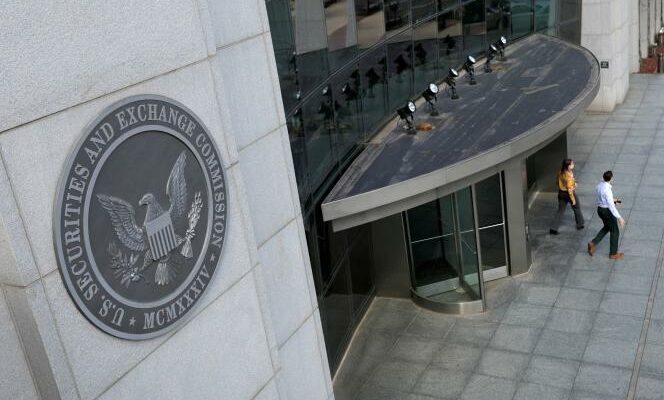“Regulation is coming. » It was Coinbase, the large crypto-asset exchange platform listed on Wall Street, which made this observation when publishing its annual results, heavily loss-making on February 21. Three months after the bankruptcy of FTX, nine months after the collapse of Terra and Luna – two shocks which had caused the value of the “crypto” market to fall by around 650 billion dollars (610 billion euros) – the American monetary and financial authorities multiply sanctions and warnings.
Targeted by the Securities and Exchange Commission (SEC), the American authority of the financial markets, the company Kraken thus agreed to pay 30 million dollars to close an investigation implicating it. For its part, Paxos was ordered by the State of New York to stop issuing, on behalf of the Binance platform, the BUSD, a “stablecoin” (literally “stable coin”, a “crypto” value backed by a real asset such as a currency) supposed to replicate the value of the US dollar. The market reacted quickly: the outstanding amount of BUSD fell in three days from 16.1 billion to 13.7 billion dollars.
The American decisions are a good illustration of the authorities’ desire to attack the “jungle” of crypto-assets. More precisely, it is a question of restoring order in a sector which has developed far from traditional finance and, very often, against it, by demanding more flexible rules, a fight led in particular by Sam Bankman-Fried , the boss of FTX today charged with large-scale fraud. “ Since the bankruptcy of FTX, the debate on regulation had fallen, but we knew that things were going to accelerate. Regulators just took a little time to choose how to attack”explains Vincent Boy, financial analyst at IG France.
The American offensive did not however trigger a panic movement: bitcoin, which remains by far the most famous crypto-asset in the world, is trading at more than 22,000 dollars, while it had fallen very close of $16,000 in November 2022.
Since the start of 2023, it has gained more than 40%, four times more than the Nasdaq Composite index, a barometer of American technology stocks. And its decline in recent days is mainly due to the setbacks of Silvergate, a bank present for years on the “crypto” market: in great financial difficulty, it closed its crypto-asset payment network, one of the most used in the United States.
You have 67.35% of this article left to read. The following is for subscribers only.
